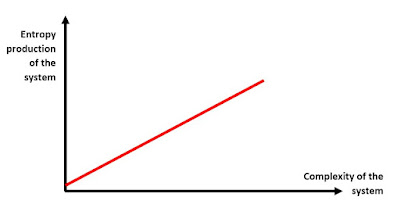Slavery ended because humans reached a greater degree of
civilization in modern times, it’s the social progress baby! Well, actually I
don’t think so. It is a bedtime story since
slavery is increasing during last years, also in developed countries.
Howard
T. Odum ecosystem analysis can help me in this analysis, as He classifies resources to
run a society in 2 different forms: stocks and flows. A stock is a storage
of resources generated in the past, while flows are resources continuously
generated. Put it simple: in your bank account the stock is the overall money amount, while the flow is your salary. Flow is like a renewable source, while stock a
kind of fossil source.
In case of the Roman Empire, resource flows were the
agricultural output in its territories, while stocks are all the things that embed
past agricultural output: cattle, gold, infrastructure, knowledge etc. You need a flow to create a stock, as you
need agricultural output to raise a cow, and also to nourish (or pay) men that
work in a goldmine or build roads etc.
If we look closer, during time the Roman Empire underwent a
significant change in the control of resources. In the first period, during
expansion, the wealth was generated by conquering more and more neighbouring
states. When Romans subdued other people, they robbed all the stocks of the
defeated state and use it for the wealth of the empire. Usually Romans forced
the unlucky people to pay taxes as well, so also a flow heading to the centre
of empire was created. But this way, by time, come to an end. Actually, Romans
could not have read the book “the limits to growth” but they indeed experienced
it. After some centuries, the oceans or deserts or other strong neighbours
stopped expansion of the Romans. This is the second, and last, period of the
empire, the fall. Stock robbery is no longer possible and the wealth of the
empire can be generated only from the internal agricultural output. Then comes
the problems, stocks plus flows is better than flows only. And the empire started
a decline. This took long time since flows were still present and also stocks (but
the former was non-renewable).
What a civilization can do to tackle declining flows of
resources? Increasing the efficiency is the usual method, so in the case of Romans
they tried to increase the agricultural output. And here they come slaves. I
did not mention before, but now is easy to see slaves as a stock of resources entering
empire from outside (defeated enemies). During the first period, slaves were a
very efficient way to bring wealth from outside to inside empire, we can
suppose that a slave was more valuable than a cow. And it was indeed, when
brought to a Roman house working hard for the master. But during the second
period of Roman era, slavery was not an efficient way of wealth generation: slaves
from outside were missing and furthermore slaves were not an efficient farmer.
If you want to push a farmer to increase the agricultural yield of the land he is working on, it is
much better serfdom, since serf subsistence depends on agricultural yield. A slave was fed by
the master, while a serf was eating directly the output of his work in the
field. So, resource generation efficiency was the prime mover of the transition
from slavery to serfdom, not higher civilization or Christian pietas. Cultural
change, on this analysis, can be seen as a consequence of the prime mover but
not a prime mover.
Slavery then had ups and downs in history, it
rebounded after 16th century in what we call the Atlantic slave
trade when a new state expansion was happening in north America. Then, eventually
came to an end (temporary?) with fossil fuel era where abundant stocks of
resources flooded the world and human stocks were superfluous. But
humanitarianism and progress doesn’t fit with this story. I would be happy if I
am wrong, and I would be happy if modern slavery will disappear, but first step
to make it happen is to understand the real cause of it.


Nessun commento:
Posta un commento